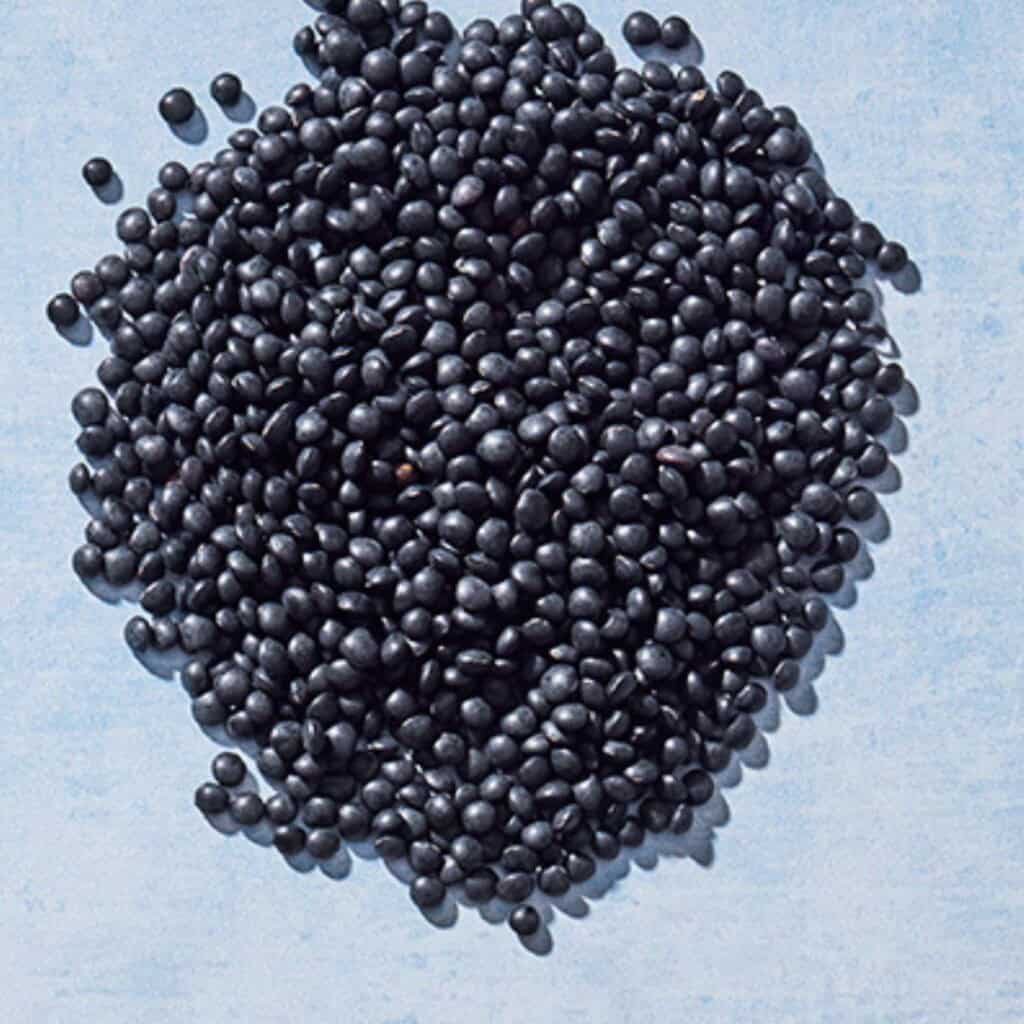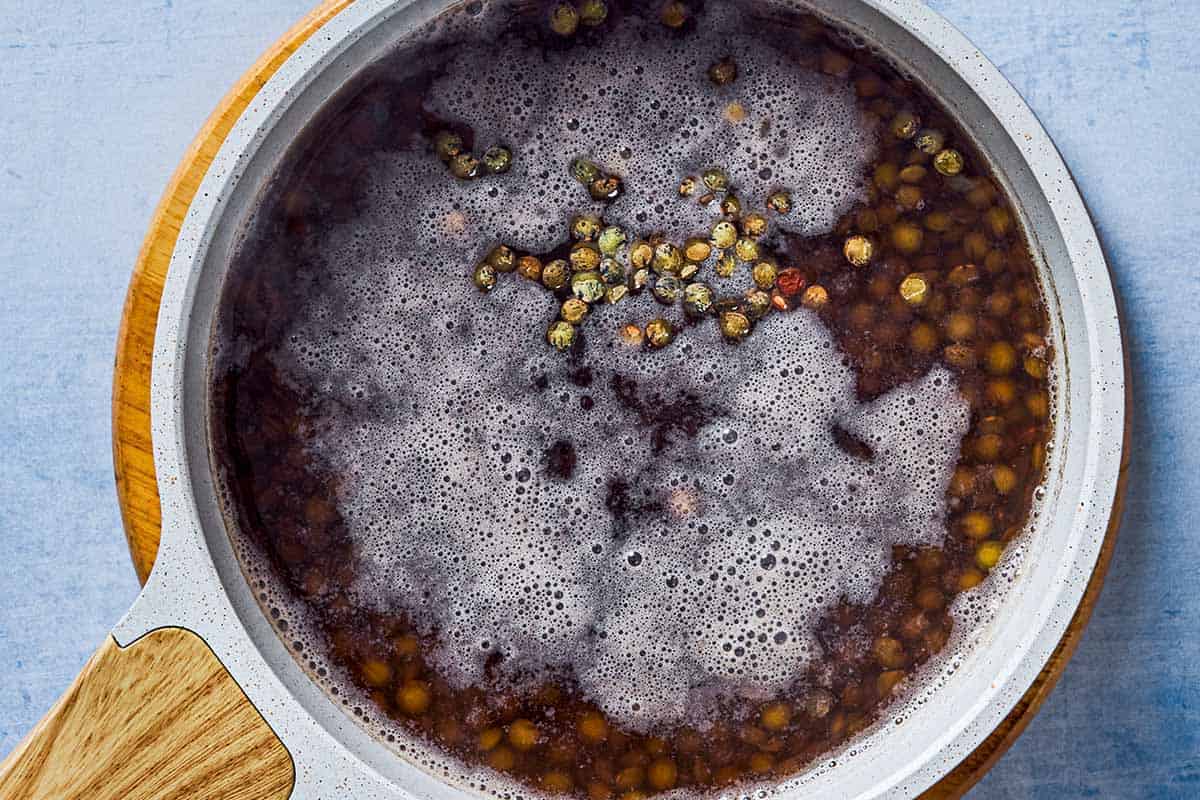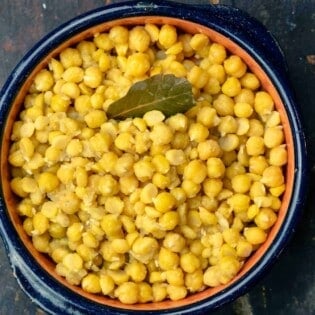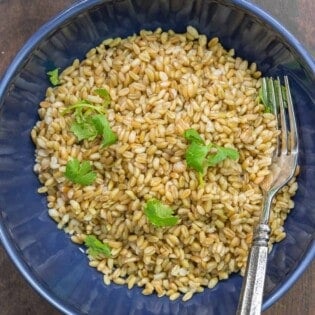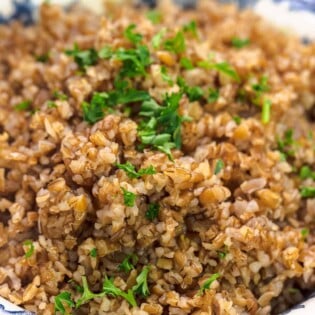There are two keys to perfect lentils: a good amount of seasoning, and less time on your stove than you may think. Learn everything you need to know about how to cook lentils the easy way, the types of lentils, and why these healthy, wallet-friendly little legumes deserve a spot on your table.
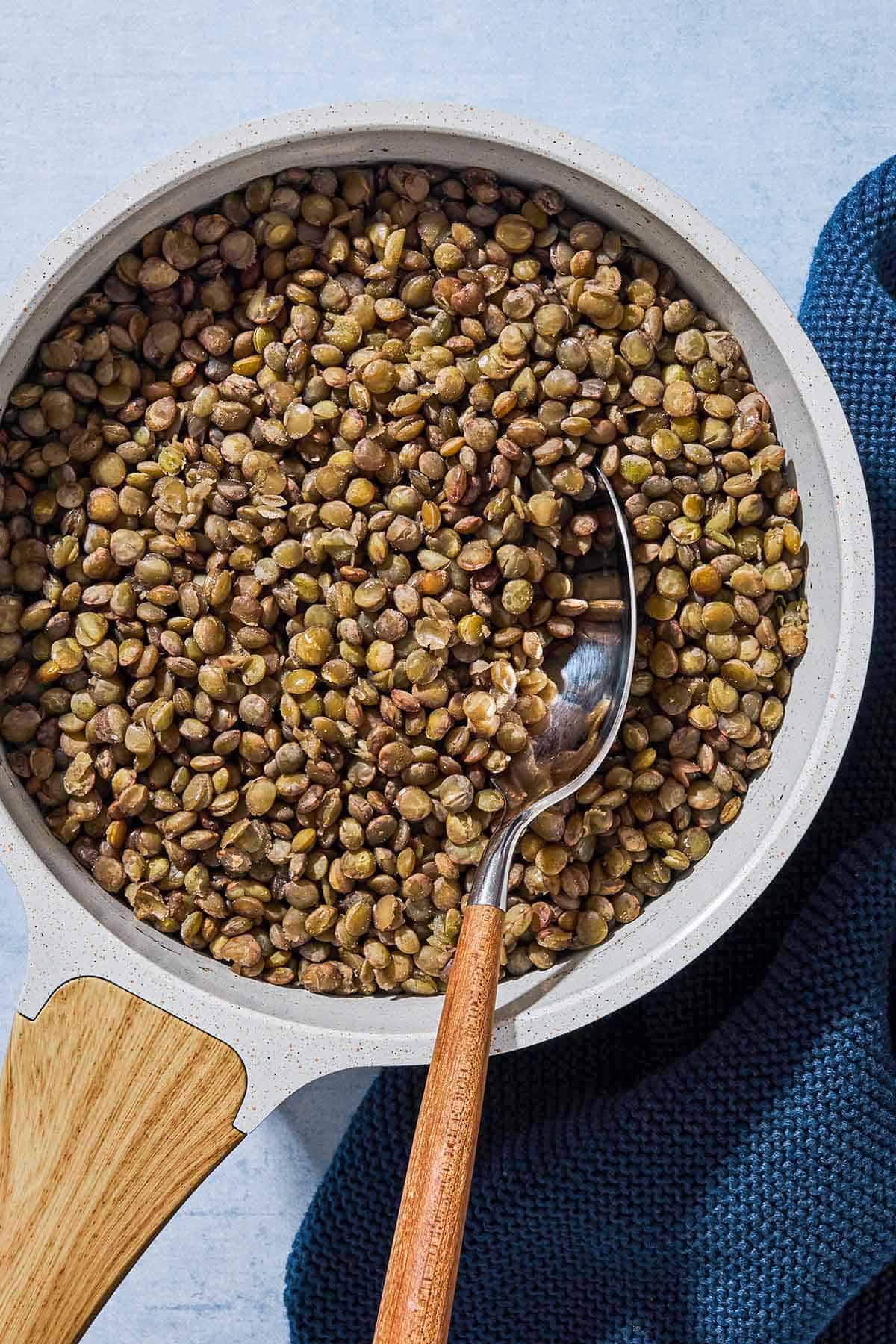
Of all the seeds in the legume world, lentils are some of the most low-maintenance. The short answer for how to cook lentils: rinse, simmer in plenty of water until tender, and drain.
Unlike cooking chickpeas or beans, they don’t need an overnight soak or hours on your stove. In fact, you cook them more like orzo–or any pasta for that matter.
Red lentils are a no-brainer. They’re already split, so they simply melt into whatever you’re making. I blend them to a comforting creaminess for vegetarian soups and stews like Kırmızı Mercimek Çorbası, my go-to when my fridge feels on the empty side.
What makes black, green, and brown lentils a bit tricker is they’re easier to mess up. Cook them well and you’ll feel like you made magic. The tiny disks become deliciously tender yet maintain their shape, adding texture and protein to Crispy Onion Rice, and even managing to give Vegetarian Moussaka a ground meat-like filling.
On the other hand, if you boil them too harshly or leave them simmering too long they can become a chalky, flavorless sludge. Thankfully, cooking lentils properly isn’t difficult, it just requires attention. Check early, check often, and season well!
Table of Contents
- What are Lentils?
- Are Lentils Healthy?
- Types of Lentils
- Use Red Lentils in These Recipes
- Use Green Lentils in These Recipes
- Use Black Lentils in These Recipes
- Use Brown Lentils in These Recipes
- How to Cook Lentils
- How Long to Cook Lentils?
- What to Serve with Lentils
- Learn to Cook the Mediterranean Way with These How-To Guides
- How to Cook Lentils Recipe
What are Lentils?
Lentils are a seed from the legume family (fabaceae), the same family as chickpeas, beans, and peas. Legumes are unique in that they produce pods with edible seeds. As one of the first domesticated crops, these unassuming nutritional powerhouses have been fueling the areas around the Mediterranean Sea and Western Asia for thousands of years.
The lentil seeds are harvested and cleaned after the pod has dried. Some varieties, like red lentils, are also hulled and split, whereby the outer coating is removed and the seed is halved.

Are Lentils Healthy?
Lentils are a major part of the Mediterranean diet for good reason. They’re chock-full of essential nutrients and rich in plant-based protein. In fact, there are 24.6 grams of protein per 100 grams of lentils, compared to chicken breasts’ measly 22.5 grams! They’re also high in dietary fiber, low in fat, and are a complex carb with a low glycemic index.
- GET THE FACTS: See the USDA for the full nutritional breakdown on both lentils and chicken breasts.
Beyond their lengthy vitamin and mineral resume, lentils are high in some of the same antioxidant compounds touted as giving extra virgin olive oil its health benefits.
Polyphenols, Saponins and Phytosterols in Lentils and Their Health Benefits: An Overview, a review published in the National Institute of Health, states, “The most common polyphenols in lentils include phenolic acids, flavan-3-ol, flavonols, anthocyanidins, proanthocyanidins or condensed tannins, and anthocyanins, which play an important role in the prevention of several degenerative diseases in humans, due to their antioxidant activity. Furthermore, lentil polyphenols are reported to have antidiabetic, cardioprotective, and anticancer activities.”
This is all to say that lentils are healthy. They’re also affordable, shelf-stable, relatively quick-cooking, and downright delicious if you treat them right.
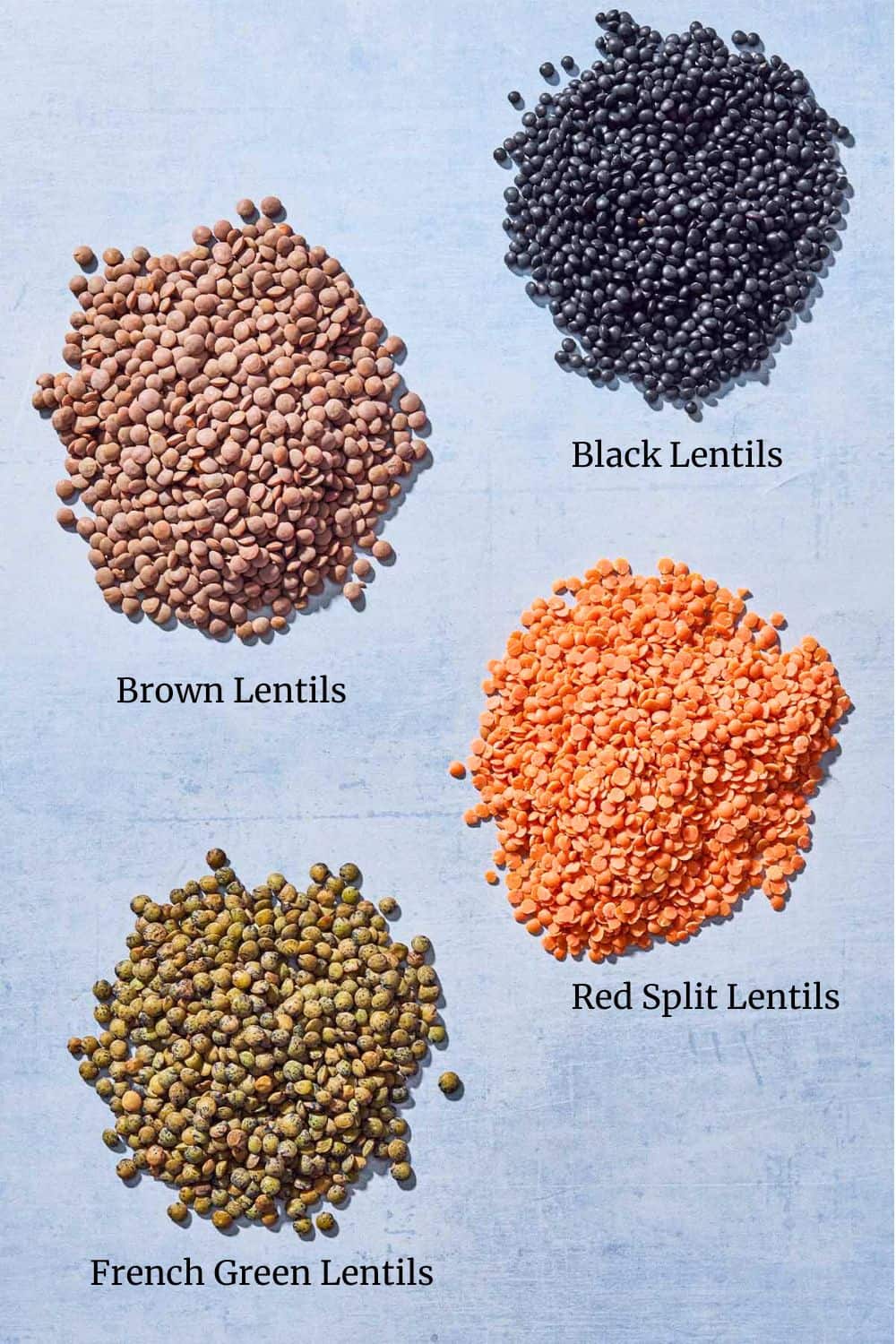
Types of Lentils
There are four main types of lentils in Mediterranean cuisine, each of which comes from a different cultivar of the same lentil plant.
Red Split Lentils
Red lentils have their outer shell removed and are split in half, so they cook very quickly but do not hold their shape like their counterparts. They’re mild in flavor and can handle many different types of seasonings. Because they essentially melt when tender, they have a talent for adding a comforting creaminess to soups and stews with no heavy cream necessary.
Use Red Lentils in These Recipes
- Easy Vegan Pumpkin Soup
- Turkish Red Lentil Soup (Kırmızı Mercimek Çorbası)
- Curried Red Lentil and Sweet Potato Soup
- Easy Greek Red Lentil Soup

French Green Lentils
These are also called “Puy lentils” as they’re traditionally grown in the Le Puy region of France. When you cook them just right, they become perfectly tender with a pleasant toothsome quality. They’re both delicate and hearty, with a very subtle peppery flavor that plays well with just about anything.
BEST SUBSTITUTE: Black or brown lentils.
Use Green Lentils in These Recipes
- Lentil Salad with Roasted Eggplant and Pomegranate Dressing
- French Lentil Salad with Cucumber, Bell Pepper, and Fresh Herbs
- Italian Sausage and Lentils with Fennel
- Adas Polo (Persian Rice and Lentils with Caramelized Onions, Dates, and Raisins)
Black Lentils
Rich in flavor and good looking, black lentils are prized even at the world’s most renowned restaurants. In fact, Osteria Francescana, a famous restaurant in Modena, Italy, serves black lentils cooked in Fish Stock in a gold tin meant to look like caviar. They’re a humble delicacy! They hold their shape well, becoming luxuriously tender with a generous bite.
BEST SUBSTITUTE: Green or brown lentils.
Use Black Lentils in These Recipes
- Caprese Lentil Salad Recipe
- Mujadara: Lentils and Rice with Crispy Onions
- Easy Butternut Squash Recipe with Lentils and Quinoa
- Best Vegetarian Moussaka Recipe
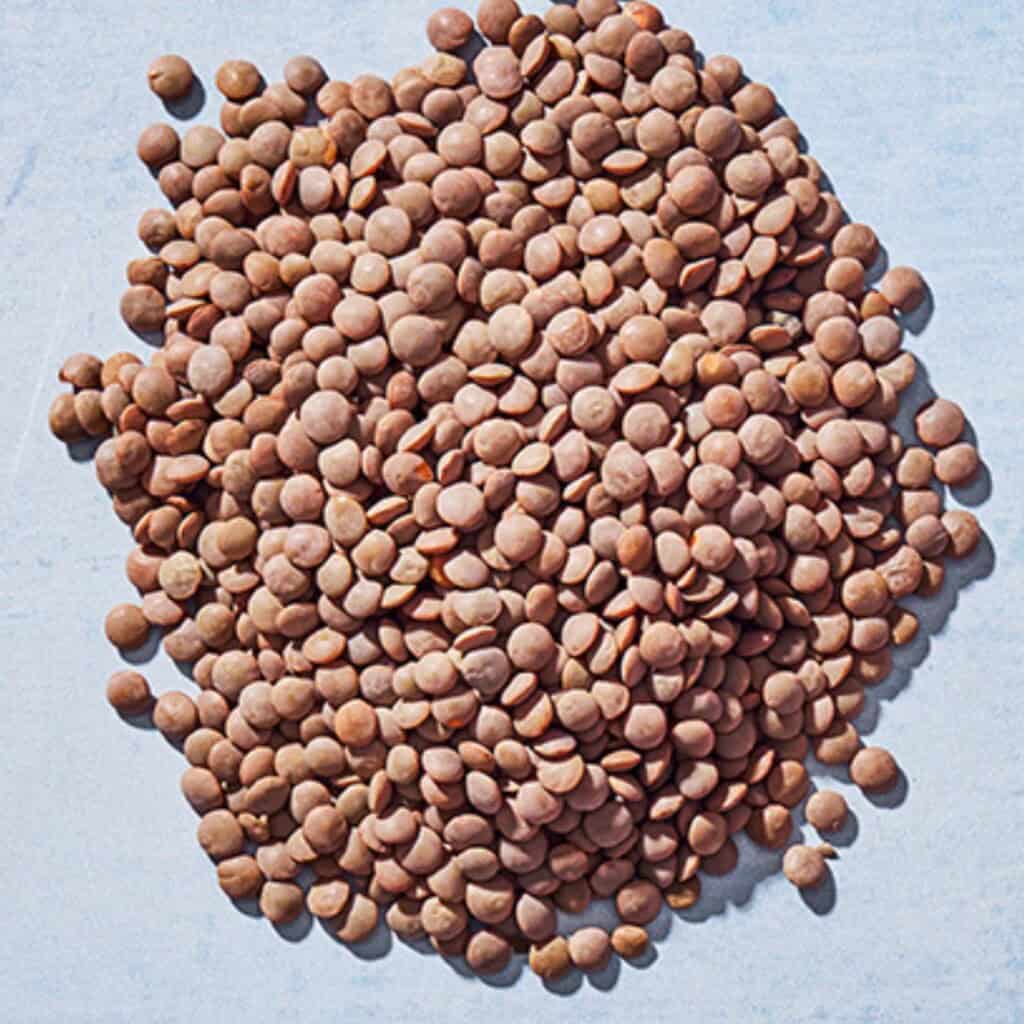
Brown Lentils
Brown lentils are similar to green lentils but slightly more tender. They’re extra useful because they can fill in at both sides of the spectrum, from adding a springy texture to salads to creamy soups and stews.
BEST SUBSTITUTE: Green or black lentils.
Use Brown Lentils in These Recipes
- Spicy Harissa White Bean and Lentil Salad
- Egyptian Koshari Recipe
- Mediterranean Grain Bowls Recipe with Lentils and Chickpeas
- Italian Lentil Soup
How to Cook Lentils
Lentils just about double in size, so if you’d like to end up with 2-ish cups then start with 1 cup of uncooked lentils. There’s no need to fuss with a ratio for the water—you can skip the measuring cup altogether and just eyeball it. Here are the easy steps to cook lentils:
- Clean the lentils. Add the lentils to a fine mesh strainer and rinse under cold water to remove debris. Pick out any rocks or stones (you typically won’t find any but it’s worth checking).
- Gently cook the lentils. Fill a medium saucepan with water and bring to a boil over high heat. When the water is boiling, turn the heat to medium-low. Add the rinsed lentils and a big pinch of salt. Simmer until the lentils are cooked to your liking.
- Strain through the fine mesh strainer and season. Lentils are plain and somewhat dry on their own. While they’re hot, throw them in a bowl and add your favorite flavors. Toss with salad dressing, infuse olive oil with Aleppo pepper and garlic, add a squeeze of lemon and a good glug of olive oil. You can season them in endless ways. Don’t forget salt!
How Long to Cook Lentils?
How long you should cook lentils depends on your taste, what you’re making, what brand of lentils you’re using, and more. Here are my suggested cook times, but remember: Always check early and cook to your liking.
- Green: 15 minutes
- Red: 8 minutes (these will not hold their shape, and are better for blending or adding to soups/stews)
- Black: 20 minutes
- Brown: 15 minutes
- Black: 20 minutes
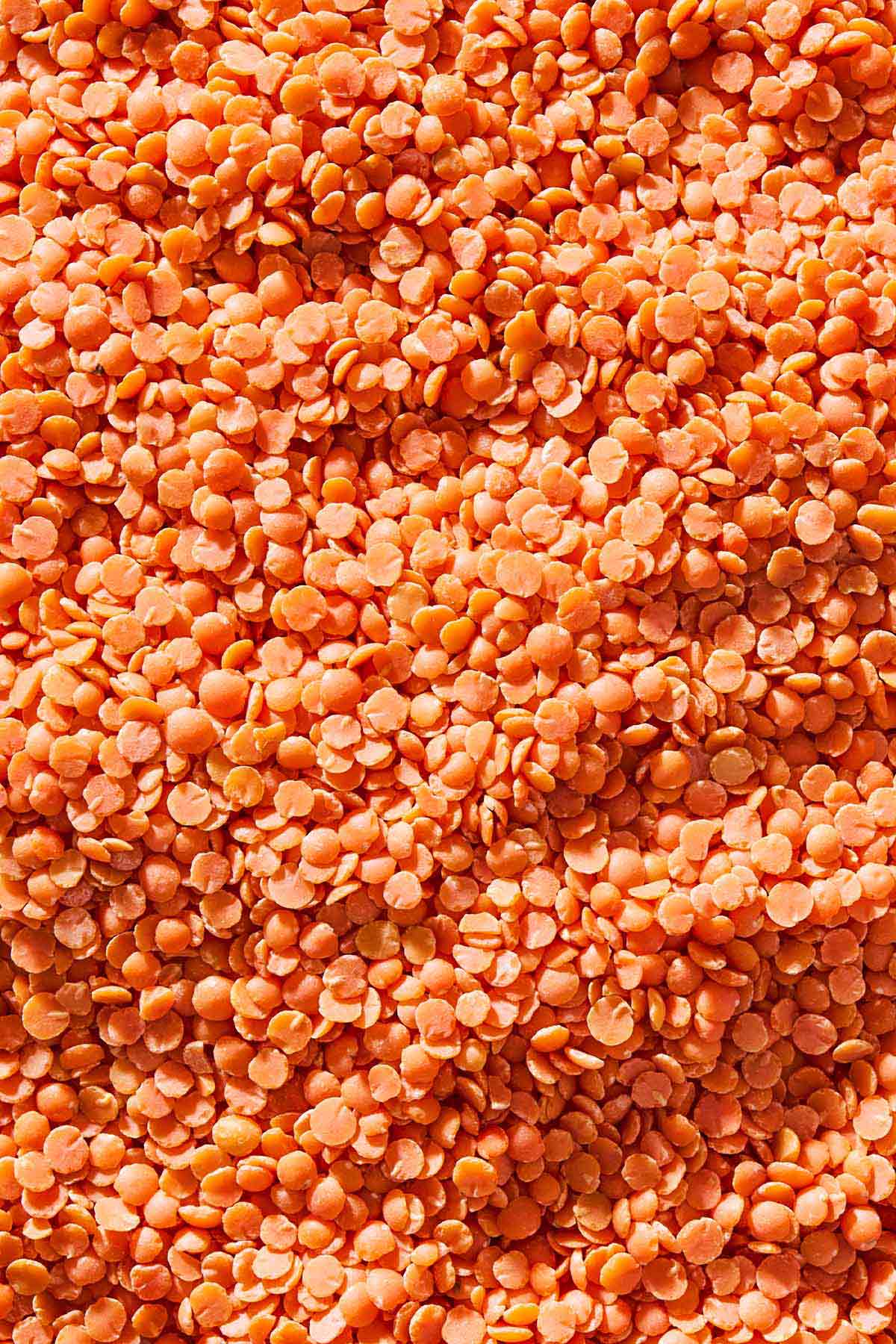
What to Serve with Lentils
We have many lentil recipes on the site that will show you how to incorporate lentils into your routine, from soups to salads and everything in between. But generally speaking, if you toss in some good flavor on black, green, or brown lentils while they’re still warm, you can prep them ahead and turn them into healthy meals all week. Some ideas:
- Add dressing: Toss with any of these 10 Healthy Salad Dressing Recipes.
- Marinate them: Infuse extra virgin oil by heating it on your stove with aromatics until fragrant, like garlic, chili pepper (dried or fresh), shallot, bay leaf, and dried herbs. Stir the flavorful oil into the lentils.
- Add protein: Serve with a fried egg, Italian sausage, or Greek Chicken.
- Add creaminess: Top with a spoonful of Greek yogurt or Labneh.
Learn to Cook the Mediterranean Way with These How-To Guides
How to Cook Lentils

Ingredients
- 1 cup Lentils (or more to your liking)
- Kosher salt
Instructions
- Clean the lentils. Add the lentils to a fine mesh strainer and rinse under cold water to remove debris. Pick out any rocks or stones (you typically won’t find any but it’s worth checking).
- Get ready to cook. Fill a medium saucepan with water and bring to a boil over high heat.
- Cook the lentils. When the water is boiling, turn the heat to medium-low. Add the rinsed lentils and a big pinch of salt. Simmer until the lentils are cooked to your liking (see note), then drain through the strainer.
- Season. Lentils are plain and somewhat dry on their own. While they’re hot, throw them in a bowl and add your favorite flavors. Toss with salad dressing, infuse olive oil with Aleppo pepper and garlic, add squeeze of lemon and a good glug of olive oil–the list goes on. Don’t forget salt!
Notes
- Shop this recipe: Visit our shop to browse quality Mediterranean ingredients including the red, green, and black lentils used in this recipe.
- How many cups of lentils should I use? 1 cup of dried lentils will yield 2-2.5 cups of cooked lentils. If you’d like to make a larger batch, simply make this recipe in a bigger pot.
- Nutrition information is based on 1/2 cup cooked lentils per person.
- Cook time: Depends on your taste, what you’re making, what brand of lentils you’re using, what you consider a simmer, etc, etc. Here are my suggested cook times, but remember: Always check early and cook to your liking!
- Green: 15 minutes
- Red: 8 minutes (these will not hold their shape, and are better for blending or adding to soups/stews)
- Black: 20 minutes
- Brown: 15 minutes
- Add aromatics: Add your favorite aromatics to the simmering water, like garlic, bay leaf, dried herbs, shallot. Season the cooked lentils with your favorite dressings, olive oils, a squeeze of lemon, vinegar, dollop of Greek yogurt, the list goes on.
- Use stock: I hate to pour good chicken or vegetable broth down the sink, but if you’re well-stocked this will also make your lentils more delicious. Instead of filling the saucepan, just be sure to cover the rinsed lentils by at least 2 inches. Bring to a rapid simmer over medium-high heat, then adjust to maintain a simmer and cook until tender. Check on them early.
Nutrition

Bundle and Save!
Stock your pantry with top quality organic red, green, and black lentils.




